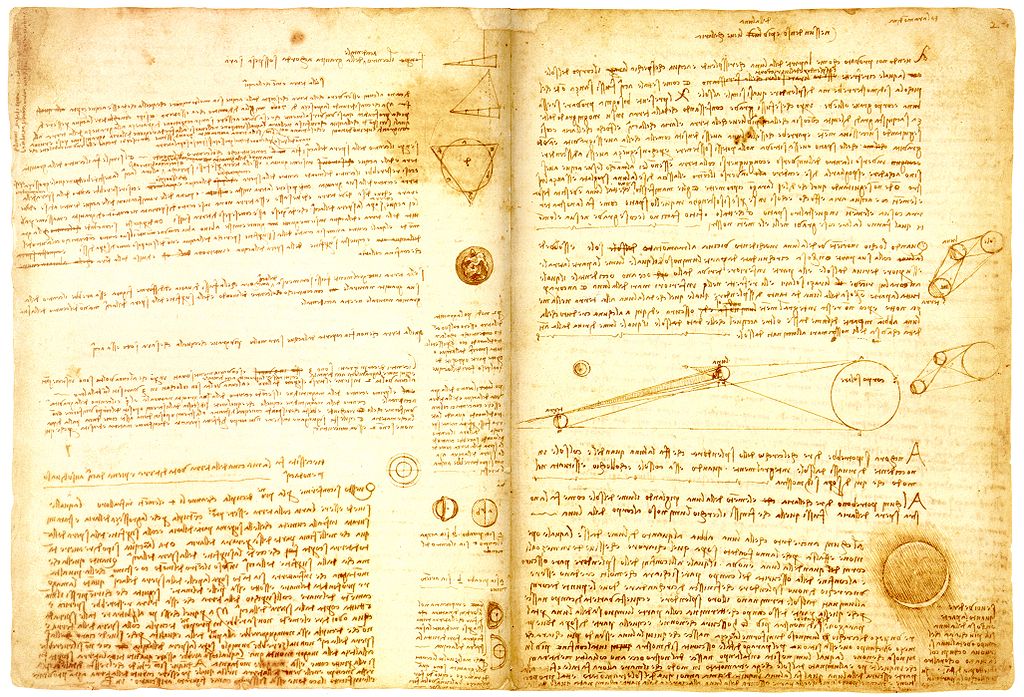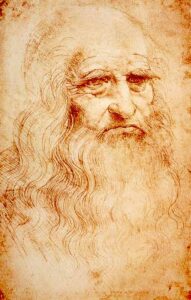
Leonardo Da Vinci’s Codex Leicester on display at the Uffizi
Leonardo da Vinci’s Codex Leicester at the Uffizi Gallery in Florence was a not-to-be-missed exhibition if you were in town. It was a preview of the celebrations that took place worldwide in 2019 for the 500th anniversary of his death. Bill Gates, owner of the Codex bought from Armand Hammer in 1994, has lent it to the city. Surprisingly, the Codex Leicester is the only privately owned codex in the world. American oil magnate and art collector Armand Hammer bought it at auction for $5.6 million in 1980. When he died he left the codex to the Armand Hammer Museum of Art and Cultural Center of the University of California. It was eventually put up for sale and later bought by Gates on November 11, 1994 for $30,802,500. Nonetheless, the manuscript has kept the name of its original owner, Thomas Coke, Earl of Leicester, who owned it in 1771.
Leonardo da Vinci’s Codex Leicester: Water as a Microscope of Nature

The Leonardo da Vinci’s Codex Leicester at the Uffizi was on exhibit from October 29, 2018 to January 20, 2019. Over two years in the making, Il Codice Leicester di Leonardo da Vinci. L’Acqua Microscopio della Natura (Leonardo da Vinci’s Codex Leicester. Water as a Microscope of Nature) was curated by Paolo Galluzzi. It was organized by the Uffizi Gallery and the Galileo Museum. This exceptional event made it possible to see one of the master’s most important works on water. The 72-page manuscript is full of ingenious annotations and extraordinary drawings. Leonardo worked on it from 1504 to 1508, which was a very intense artistic and scientific period for him. In fact, he was also studying anatomy at Santa Maria Nuova Hospital, trying to make man fly, beginning his work on the mural depicting the lost “Battle of Anghiari” at Palazzo Vecchio (which he didn’t finish), and studying futuristic solutions for sailing on the Arno River.
Da Vinci’s paintings at Uffizi
The Codex’s 72 folios could be found in the Uffizi’s Aula Magliabechiana. Visitors could browse the digital versions of the folios and read the transcripts. Some of Leonardo’s spectacular drawings were also be on display. This was a once-in-a-lifetime opportunity to get to know Leonardo’s genius and to visit one of the most beautiful museums in the world. Actually, the ticket was valid for this exhibit and the Uffizi Gallery. Don’t miss Leonardo’s three works at the gallery: the Baptism of Christ, the Annunciation, and the Adoration of the Magi. The studies about the natural elements he carried out during his early ages are reflected on his paintings. In fact, water, earth, weather conditions, fog, plants are all depicted by Da Vinci as seen through a microscope, approaching every painting as a scientific experiment. If you’re interested in Jewish culture, take a look at my article about the paintings with Jewish subjects at Uffizi Gallery in Florence!
